Exploring Infinite Dimensions in Anime and Manga
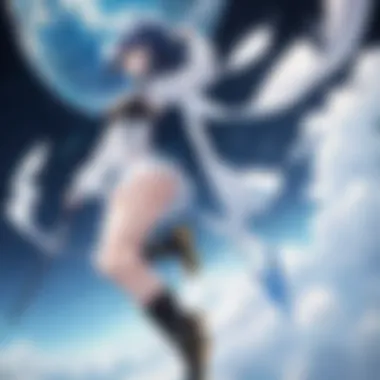
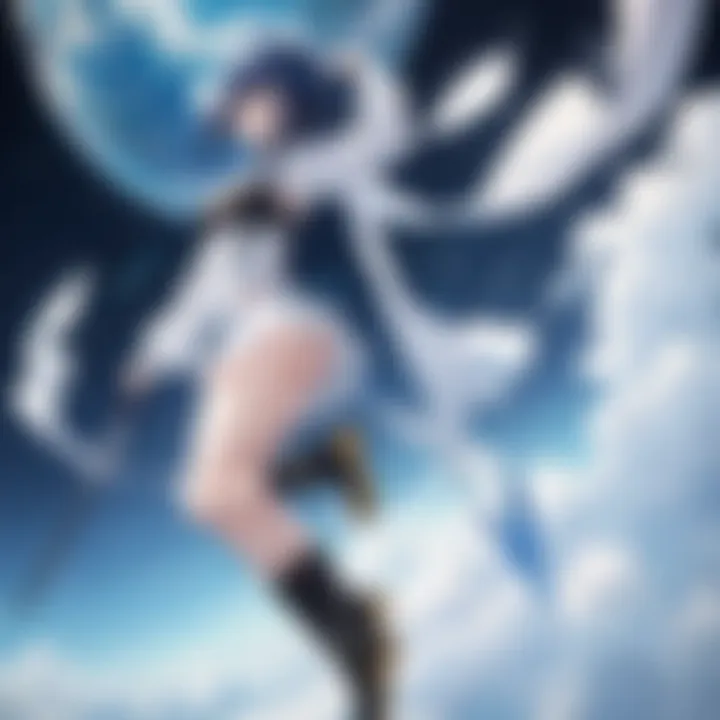
Intro
Anime and manga, as distinctive art forms originating from Japan, have captured the imagination of millions worldwide. They serve not just as entertainment but as platforms for storytelling, cultural expression, and artistic innovation. The engagement and exploration of various themes and characters contribute to the rich tapestry spanning diverse genres. The following sections will provide an in-depth examination of key character profiles, thematic explorations, and notable series that define the landscape of this vibrant medium.
Character Profiles
In any narrative, characters are the beating heart. They breathe life into the plot and are often the embodiments of various themes. Understanding their complexities can deepen one's appreciation of the story.
Overview of Main Characters
Main characters often undergo significant transformations throughout their journeys. They navigate their environments, personal challenges, and relationships, which reveals their layers. Some iconic examples include:
- Naruto Uzumaki from "Naruto" - A determined ninja striving for recognition and acceptance, showcasing themes of perseverance and friendship.
- Makoto Naegi from "Danganronpa" - An everyman in a world of despair, reflecting hope amid hopelessness.
- Guts from "Berserk" - A character steeped in a dark narrative, exploring themes of struggle against overwhelming odds.
These main characters not only drive the plot forward but also resonate with audiences on various levels.
Supporting Characters
Supporting characters play crucial roles that complement the protagonists. They provide necessary depth to the story, offering contrasting perspectives or aiding character development.
- Sakura Haruno, alongside Naruto, enriches the narrative by showcasing her own journey of growth.
- Levi Ackerman from "Attack on Titan" stands out as a mentor figure, embodying strength and loyalty.
Their contributions are often undervalued yet fundamental to the narrative structure, allowing for a more comprehensive understanding of the protagonist's journey.
Theme Exploration
Delving into themes present in anime and manga can unveil broader narratives and social commentaries embedded in these art forms.
Central Themes
Several themes recur in anime and manga that explore human emotions and societal issues. Prominent themes include:
- Identity and Self-Discovery - Characters often embark on journeys that challenge their understanding of who they are.
- Friendship and Unity - Stories frequently highlight the importance of bonds and teamwork in overcoming obstacles.
- Good vs. Evil - A classic theme, with shades of gray that complicate the moral landscape.
These themes strike a chord, making the stories relatable, regardless of cultural background.
Cultural References
Anime and manga are also saturated with cultural references that reflect Japanese society and history. For instance:
- Shinto and Buddhism often influence the narratives and character motivations.
- Historical events may be woven into fictional settings, such as the portrayal of samurai in tales like "Rurouni Kenshin."
Understanding these cultural nuances enhances the viewing and reading experience, opening avenues for deeper discussions about the content.
Popular Series and Recommendations
As the anime and manga landscape is vast, certain series distinguish themselves and deserve mention.
Top Anime Series of the Year
In the current landscape, notable titles include:
- Demon Slayer: Kimetsu no Yaiba - Celebrated for its animation quality and emotional storytelling.
- Jujutsu Kaisen - Known for its dynamic battle sequences and well-crafted characters.
These series have captured significant attention, demonstrating the ongoing evolution of storytelling within this medium.
Hidden Gems in Manga
Among popular works, there are lesser-known series that also merit recognition:
- Oyasumi Punpun - A surreal touch on adolescence and mental health.
- The Promised Neverland - Combines suspense and ethical dilemmas in a dystopian setting.
Discovering these hidden gems can lead to rich discussions and a greater appreciation for the depth present in manga.
Closure
Anime and manga reveal an intricate world full of vibrant characters, profound themes, and cultural significance. As audiences engage with these narratives, they uncover not just stories but insights into human experience, identity, and society. Understanding these dimensions enhances both appreciation and relevance, bridging cultural gaps and inviting further exploration.
Preface to Infinite Worlds in Anime and Manga
The realm of anime and manga stands as a testament to creative expression, pushing beyond conventional boundaries of narrative and artistic representation. This introduction establishes the case for exploring the infinite dimensions represented within these two art forms. From intricate plots to diverse characters, anime and manga serve to engage audiences not merely as passive viewers but as active participants in a greater narrative experience. Their significance lies in their ability to transcend mere entertainment, offering profound reflections on culture, society, and individual identity.
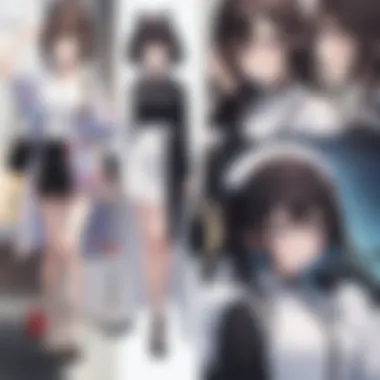
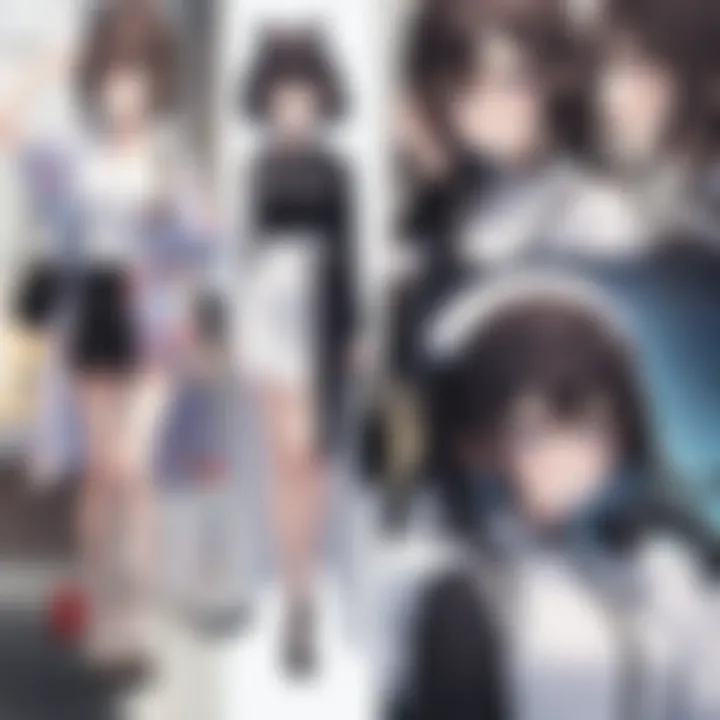
The realization of as many realities as there are creators allows for a limitless exploration of themes, styles, and genres. Anime and manga produced in Japan have ventured into varied territories from the whimsical to the somber. By diving into this infinite world, one can appreciate the distinctive craftsmanship involved in storytelling and visual art, gaining new perspectives that enrich understanding.
Defining Infinitude in Narrative
When discussing narrational infinitude, we must consider various aspects that contribute to its expansive nature. Anime and manga often blend genres, presenting stories that aren’t confined to traditional storytelling frameworks.
These works allow for flexible plotting, going as far as defying time and space. For instance, series such as Steins;Gate engage in time travel concepts, exploring consequences of altering timelines. Such narratives illustrate how creators transcend linear storytelling.
Inherent in this infinitude is also the notion of interconnected universes. My Hero Academia and One Piece, for example, have unique worlds that create an integrated landscape, allowing characters and themes to coexist and overlap across different works.
Therefore, the definition of infinitude in narrative encapsulates more than just extensive storylines; it encompasses a rich tapestry where ideas and characters resonate within broader sociocultural dynamics. The narrative styles evolve, demonstrating that storytelling can be an ongoing, living process.
The Role of Imagination in Content Creation
Imagination serves as the cornerstone of anime and manga. Creators wield an unbridled capacity to express visions that often stray far from reality. The creative process can take many forms, from developing fantastical worlds to crafting intricate character backgrounds.
The imagination of writers and artists contributes to thematic depth, allowing their works to resonate on multiple levels. Consider Attack on Titan, where the initial premise evolves into philosophical explorations of freedom, morality, and survival.
Additionally, the collaboration between writers, artists, and even fans fosters a dynamic exchange of ideas. Fan art and fanfiction provide platforms for further storytelling, expanding the narrative boundaries envisioned by original creators. These vibrant fan interpretations can create an interactive experience that deepens engagement with the content while showcasing the imaginative possibilities.
Historical Context of Anime and Manga
Understanding the historical context of anime and manga provides valuable insights into their development and significance. This context encompasses the cultural, social, and political influences that shaped these mediums. The evolution of anime and manga reflects broader trends in Japanese society and offers a lens through which to view changes in artistic expression.
The historical context serves not only to trace the origins of these art forms but also to highlight how they have changed over time. Exploring key phases in their development allows readers to comprehend the dynamics that helped foster creativity and innovation. Moreover, recognizing historical patterns can elucidate recurring themes and archetypes in anime and manga, enhancing appreciation for their rich narratives.
Origins and Early Development
The origins of anime can be traced back to early 20th century Japan. In the 1910s, experimental filmmakers began creating animated short films. One of the earliest examples is "Namakura Gatana," a silent film released in 1917. These initial efforts were rudimentary but laid the groundwork for more complex productions. Meanwhile, manga has roots that go back even further. During the Edo period, illustrated narratives known as "ukiyo-e" became popular. Artists like Hokusai and Kuniyoshi combined art and storytelling, influencing future generations of manga creators.
As Japan modernized in the post-war era, the demand for mass media grew. In the 1950s, Osamu Tezuka emerged as a central figure in shaping manga. His work, particularly "Astro Boy," is often credited with defining the modern style of manga. Tezuka's storytelling techniques and character design innovations had a profound impact on the industry. Over the decades, anime evolved from short films into full-length features. This transition became notable with the 1963 adaptation of "Astro Boy," marking the dawn of television anime.
Key Historical Milestones
Several milestones have marked the growth of anime and manga, contributing to their global recognition. In the 1970s, "Mobile Suit Gundam" introduced the concept of mecha anime, blending complex narratives with intricate robot designs. This genre expanded the audience base and inspired countless creators.
The 1980s and 1990s saw the internationalization of anime. Shows like "Dragon Ball" and movies such as "Akira" brought attention to anime beyond Japan. This period also included the emergence of renowned studios like Studio Ghibli, which garnered international acclaim for their art and storytelling. Such milestones were not only significant for commercial success but also facilitated cultural exchanges that enriched global perspectives.
In the 2000s, online platforms began to democratize access to anime and manga. Streaming services allowed viewers worldwide to explore titles previously unavailable outside Japan. This surge in accessibility has fostered a vibrant global fan community, further solidifying anime and manga as integral aspects of contemporary pop culture.
The evolution of anime and manga has been profoundly intertwined with historical and cultural shifts, reflecting not just artistic transformations but societal ones.
Through understanding the historical context of anime and manga, readers can appreciate their evolution as reflective of human experience and creativity. These narratives continue to resonate while opening avenues to explore complex themes and artistic variations.
Genres and Their Infinite Variations
The varied genres in anime and manga are a crucial aspect of these art forms. They offer depth and insight into different narratives, themes, and cultures. Each genre appeals to distinct audiences, creating a rich tapestry of storytelling that transcends cultural barriers. Understanding these genres is essential for comprehending the vast landscape of anime and manga.
Genres not only provide entertainment but also convey profound messages. Each genre serves as a vessel for specific themes, allowing creators to express societal challenges, personal growth, or fantastical adventures. This variety enhances the overall impact of the medium, making it more than just visual entertainment.
Popular Genres in Anime and Manga
Several genres dominate the anime and manga landscape. Shonen, Shoujo, Seinen, and Josei are among the most popular.
- Shonen typically targets young male audiences. It often includes themes of friendship, adventure, and self-discovery. Titles like Naruto and My Hero Academia exemplify this genre.
- Shoujo focuses on young female readers. Romantic themes and emotional development are common. Works like Sailor Moon and Fruits Basket are well-known in this category.
- Seinen and Josei cater to adult audiences with more complex themes and mature perspectives. Attack on Titan showcases the darker sides of humanity, while Nana touches on adult relationships and struggles.
These genres not only define the target audience but also influence the storytelling and artistic style of the works. They are vital for attracting and retaining viewers, as they meet the expectations of distinct demographic groups.
Niche Genres and Their Evolutions
Niche genres continue to grow in popularity within the anime and manga community. These genres often explore unique themes or storytelling styles that are outside mainstream conventions. Examples include Isekai, Slice of Life, and Mecha.
- Isekai involves characters transported to another world. This genre often allows for creativity in world-building and character development. Works like Sword Art Online and Re:Zero have revitalized this genre, earning large fan bases.
- Slice of Life focuses on everyday experiences. It highlights character interactions and personal reflections, making it relatable. Titles like March Comes in Like a Lion illustrate the genre's emotional depth.
- Mecha revolves around giant robots, often including themes of war, technology, and humanity. Classic series like Mobile Suit Gundam have laid the groundwork, pushing boundaries for storytelling.
Niche genres evolve to mirror societal changes, technology, and cultural shifts. They reflect the desires of creators to explore lesser-known stories, creating opportunities for new audiences and fresh perspectives. The expansion of these genres shows the versatility and adaptability of anime and manga.
Character Development: Infinite Archetypes
Character development in anime and manga stands out as a crucial aspect of storytelling. The depth and variety of character archetypes allow for rich narratives and distinct emotional connections. Each archetype can bring forth different themes and perspectives, enhancing the viewer's experience. The ability to create relatable and complex characters is essential in engaging audiences, making the narrative elements more impactful.
A well-crafted character can resonate with the audience, often leading them to reflect on personal experiences or societal issues. This close connection encourages viewers to invest emotionally in the storyline, making the stakes feel higher and the outcomes more significant. Without strong character development, even the most imaginative settings or intricate plots can fall flat. Effective character construction is more than just introducing unique personalities; it involves evolving these characters throughout the narrative arc.
Classic and Modern Character Archetypes
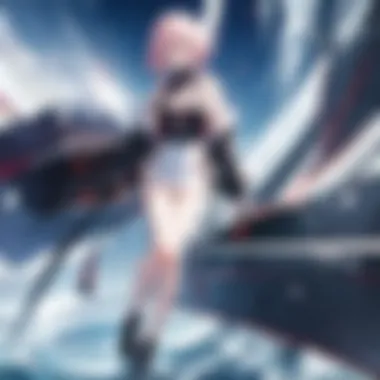
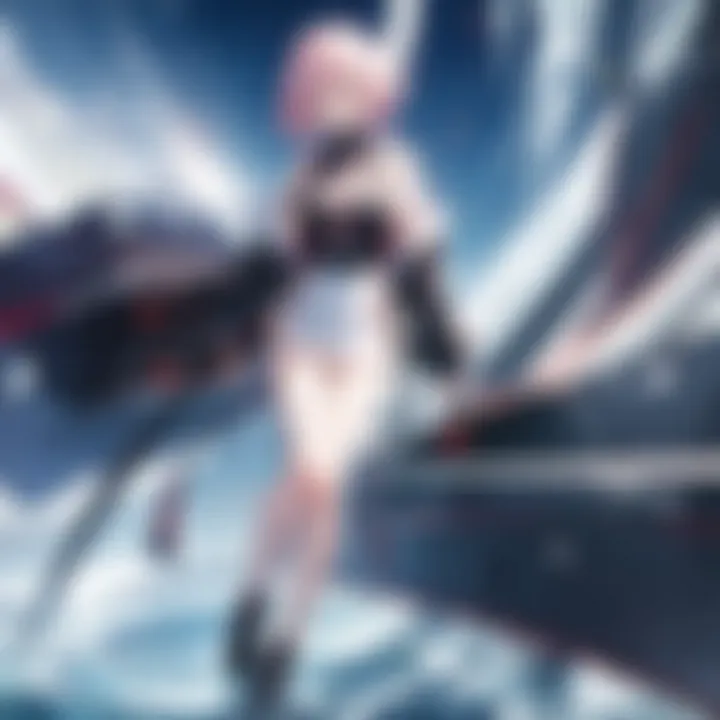
Character archetypes are not static; they evolve over time. Classic archetypes include heroes, mentors, and sidekicks, originating from traditional storytelling. For instance, the hero archetype in works like Dragon Ball Z has been a significant influence, showcasing the journey of characters like Goku. They often embody determination, strength, and moral integrity, which make them compelling to follow.
Recent trends introduce modern twists on these archetypes. For example, characters like Light Yagami from Death Note or anti-heroes from various series explore morally ambiguous paths. These modern depictions challenge traditional values and offer complexities that provoke thought. Audiences witness characters torn between their desires and ethics, making their stories all the more engaging.
- Hero Archetypes: Goku from Dragon Ball Z; Izuku Midoriya from My Hero Academia
- Anti-Heroes: Light Yagami from Death Note; Walter White from Breaking Bad
- Complex Supporting Characters: Kakashi Hatake from Naruto; Erza Scarlet from Fairy Tail
Complexity and Growth of Characters
Characters in anime and manga frequently experience profound growth, shaped by their experiences and journeys. This complexity is a hallmark of well-written narratives, allowing characters to embody real human emotions and struggles. The process often involves facing challenges that test their limits and beliefs.
For instance, the transformation of characters like Shinji Ikari from Neon Genesis Evangelion showcases profound psychological development. His struggle with identity and acceptance resonates with many viewers, illustrating the nuances of personal growth.
Moreover, character relationships can influence development significantly. Through interactions with others, they can evolve or regress, providing insight into their personalities and motivations. This interplay offers a multi-dimensional view of characters and reflects the varied nature of human relationships.
"Strong characters are not just defined by their successes, but by their failures and how they rise from them."
Thematic Elements: Exploring Infinite Narratives
The thematic elements within anime and manga serve as the backbone of their storytelling. They encapsulate core ideas that resonate deeply with audiences, making the narrative not just entertaining but also thought-provoking. The exploration of these themes is crucial to understanding how these art forms engage viewers and readers on multiple levels. Themes such as identity, love, existential dread, and conflict are prevalent, but the treatment of these elements is often what sets one work apart from another.
Universal Themes in Japanese Storytelling
Japanese storytelling, particularly in anime and manga, often revolves around universal human experiences. For example, themes like friendship, sacrifice, and the journey of self-discovery recur across various genres. This universality allows works to transcend cultural boundaries and connect with a global audience.
One notable example is the theme of coming-of-age, prevalent in series such as "My Hero Academia." Here, we follow young individuals grappling with their powers and responsibilities. This journey resonates as many viewers can relate to the struggles of adolescence and finding one's place in the world.
Additionally, the importance of family is a recurring motif. Series like "Your Name" highlight the bonds that shape people's lives, showcasing how familial connections can influence one's identity and choices. The reverberations of this theme illustrate the fundamental ways people navigate their relationships with others and how such connections can be a source of strength or weakness.
"Anime and manga often mirror the complexities of human emotions and relationships, making them relatable to viewers from various backgrounds."
Cultural Significance of Themes
The cultural significance of thematic elements cannot be overstated. In many ways, they provide a window into the societal values and issues facing Japan. Themes of honor and duty are common in historical settings, as seen in titles like "Attack on Titan." Here, the characters confront moral dilemmas and responsibilities, reflecting Japan's cultural heritage of collectivism and loyalty.
Moreover, these themes can often respond to contemporary societal challenges. The portrayal of mental health in series like "Neon Genesis Evangelion" reveals deep anxieties about existence and individual purpose. This direct engagement with real-world issues demonstrates how anime and manga can serve as a platform for discussion and reflection on significant topics.
Understanding these thematic elements is essential for anyone looking to appreciate the depth of anime and manga storytelling. Through examining universal and culturally specific themes, an audience gains a richer perspective on the narratives being told and the societal contexts in which they are created.
By studying these elements within various works, enthusiasts can not only enjoy the surface-level excitement but also uncover the profound reflections on life that lie beneath.
Artistic Styles: Boundless Creativity
Artistic styles in anime and manga play a crucial role in shaping narratives, character perceptions, and overall viewer engagement. They are not merely aesthetic choices; rather, they are integral components that amplify storytelling and cultural representation. Different styles convey distinct moods and themes, enriching the viewer's experience and contributing to the medium's infinite creativity. The varied artistic approaches found in anime and manga can speak to individual cultural identities, emotional depth, and fan communities.
Visual Aesthetics in Anime and Manga
The visual aesthetics of anime and manga are diverse and can range dramatically from the hyper-stylized to the vividly realistic. The aesthetic choices are often influenced by genre conventions and cultural factors. For instance, shonen manga, targeted primarily at younger males, often exhibits bold colors and dynamic character designs. In contrast, shojo manga tends to use softer lines and pastel colors to evoke emotions and highlight character expressions.
Specific features of visual aesthetics include:
- Color Palette: Different stories employ distinct color schemes to enhance narratives. For example, dark colors might indicate a more serious or complex theme, while bright colors can signal light-heartedness and fun.
- Character Design: Unique character designs, including exaggerated facial features and physical traits, often represent the essence of characters' personalities, making them memorable.
- Background Art: The level of detail in background artwork can affect the overall tone, immersing the audience into the world. Rich backgrounds can evoke a sense of place and culture.
By focusing on these aspects, creators establish emotional connections with the audience that resonate throughout the viewing experience.
Technological Innovations in Artwork
Technological advancements have significantly influenced anime and manga production. Tools such as digital illustration software and animation techniques have allowed for more complex visual storytelling. Technologies like Adobe Photoshop and Clip Studio Paint are now staples for artists. This shift has enabled a greater range of expression and creativity, breaking traditional boundaries in artistic production.
Key innovations include:
- Digital Coloring: Enhancements in coloring techniques allow for gradients and effects that were once challenging or impossible to achieve with traditional methods.
- 3D Modeling: More series use 3D models for backgrounds or even characters, blending traditional 2D with 3D creativity to create a modern viewing experience.
- Animation Software: Advanced animation programs streamline the process, allowing for more detailed and fluid character movements.
These innovations not only enhance the visual appeal but also enable artists to explore unique narratives and styles. As technology continues to advance, it opens doors for new creative possibilities, ensuring that the world of anime and manga remains ever-evolving and dynamic.
"The use of innovative technologies in anime and manga does not merely alter how art is created; it revolutionizes the storytelling process itself."
The interplay between artistic styles and technological advancements continues to shape this ever-expanding landscape, illustrating the boundless creativity possible within the medium.
Cultural Impact: Anime and Manga on Society
The cultural impact of anime and manga extends far beyond mere entertainment. These two art forms have become significant cultural exports from Japan, shaping perceptions, attitudes, and social behavior across the globe. In this section, we will explore how anime and manga contribute to cultural exchanges, influence societal norms, and provide a platform for diverse voices.
Globalization of Japanese Media


Anime and manga have played a crucial role in the globalization of Japanese culture. Their popularity has surged outside Japan, creating a dynamic interplay between cultures. This exchange enriches both Japanese culture and that of the countries engaging with it. The adaptation of these forms in various languages illustrates their wide-ranging appeal.
- Wide Distribution: Anime and manga are now available on various streaming platforms like Crunchyroll and Netflix. This accessibility allows more audiences to experience stories from a different cultural background.
- Collaborative Projects: There are numerous collaborations between Japanese creators and international studios. These partnerships foster broader creativity, merging distinct narrative styles and artistic influences.
- Fan Subcultures: Local fan communities emerge around these art forms, producing fan art, fan fiction, and cosplay. Such activities enhance the global reach and give rise to international events, such as anime conventions.
"Anime and manga have transcended their regional origins, creating a global dialogue that reflects and shapes modern identities."
Social Commentary through Animations
Anime and manga are not merely stories for escapism; they often serve as a powerful medium for social commentary. Through various narratives, they tackle pressing issues such as identity, inequality, and environmental concerns. The way creators address these themes can lead to increased awareness and discussion.
- Identity and Belonging: Series like Naruto underscore the struggles of belonging and acceptance, resonating with many viewers who may feel marginalized.
- Societal Challenges: Titles like Attack on Titan evoke themes of oppression and freedom, stimulating thought on authoritarianism and resistance.
- Environment and Sustainability: Productions such as Princess Mononoke prompt viewers to consider humanity's relationship with nature, driving discussions about environmental stewardship.
Community Engagement: Fostering Connection
The realm of anime and manga transcends mere entertainment; it is a profound avenue for connection among fans. This community engagement is vital as it offers both social interactions and shared experiences. It builds a sense of belonging, creating networks that extend across geographical boundaries. Through various channels, fans unite over a common passion. Online platforms and conventions are primary facilitators in this engagement, allowing fans to connect, collaborate, and celebrate their interests.
Online Platforms and Their Role
In recent years, online platforms have become indispensable in fostering connection within the anime and manga community. Websites such as Reddit and Facebook host numerous groups and forums dedicated to specific series, genres, and aspects of these art forms. These platforms allow fans to share their thoughts, artwork, and recommendations. The interaction ranges from casual discussions to intense debates, enriching the community's overall experience.
Social media has also played a crucial role in connecting fans with creators. Platforms like Twitter and Instagram enable artists and writers to share their work directly with their audience. This direct interaction fosters a two-way dialogue, leading to a deeper appreciation of the medium. Fans often engage with creators through live streams or AMAs (Ask Me Anything), providing insights into the creative processes behind their favorite works.
Conventions and Community Building
Conventions serve as a physical embodiment of community engagement. Events like Anime Expo and Comic-Con gather fans in one place, offering them a unique opportunity to meet, interact, and celebrate their love for anime and manga. These gatherings enhance the sense of community by providing panels, workshops, and merchandise stalls that reflect the culture and creativity of the fandom.
At these conventions, attendees can engage in discussions with industry professionals and creators. This interaction can spark new ideas and collaborations, creating a vibrant environment where fans share their creations. Additionally, cosplaying has become a significant part of conventions, allowing individuals to express their passion through elaborate costumes.
"Conventions are more than just events; they are a celebration of passion and creativity that brings fans together."
Through these shared experiences, lasting friendships often form, showcasing the emotional connections that anime and manga cultivate.
Future Trends in Anime and Manga
The world of anime and manga is ever-evolving, shaped by cultural shifts, technological advancements, and fan expectations. Understanding future trends in these mediums provides insight into not only where they will go but also how they will affect storytelling and audience engagement. As global interest continues to rise, the importance of staying ahead of trends becomes evident.
Anticipated Developments in Storytelling
Storytelling in anime and manga has transitioned significantly over the past decades. The narrative styles and themes are increasingly complex, reflecting broader sociocultural dynamics. One anticipated development is the move toward multifaceted narratives. This includes stories that weave multiple plots, allowing narratives to explore various perspectives. Additionally, the blending of genres is likely to become more pronounced. Established genres such as shonen and shojo may incorporate elements from less traditional genres like horror or romance, leading to innovative storytelling.
Another trend is the focus on character-driven stories. Audiences increasingly seek deeper engagement with characters. Writers are responding by creating intricate character backgrounds and nuanced personalities. The rise of diverse representation within these character arcs is transforming narratives, making them more relatable and reflective of real-world diversity. More series may explore themes of identity, mental health, and societal issues, thus fostering a richer dialogue with viewers.
Moreover, shifting consumer behavior shows a rising preference for interactive storytelling. Platforms such as webtoons and visual novels facilitate audience participation in story development. This interactivity not only heightens engagement but also personalizes the viewing experience. Fans may influence or even co-create story arcs, fostering a greater sense of community and ownership over the content.
Emerging Technologies and Their Influence
Technology plays a crucial role in shaping the future of anime and manga. The advent of artificial intelligence and machine learning is beginning to influence character design and animation quality. AI could enhance the production pipeline, allowing for faster turnaround times without sacrificing artistry or creativity. These technologies can be utilized to analyze audience preferences, which can then inform character development and plot progression.
Virtual reality (VR) and augmented reality (AR) also promise to transform viewer engagement. Imagine entering a 3D anime world, interacting with characters directly, or experiencing storylines from the character's perspective. Such technologies can redefine viewer immersion, creating unique experiences that were previously unimaginable.
Additionally, streaming platforms are redefining distribution models, making it easier for creators to reach international audiences without intermediaries. Platforms like Crunchyroll and Netflix are prioritizing not just accessibility, but also original content creation tailored to global markets. This globalization of content encourages the infusion of diverse cultural elements into anime and manga, enriching the overall landscape.
"The integration of advanced technologies and rich narratives may give rise to a new wave of storytelling that engages audiences in ways we've yet to fully comprehend."
Finale: The Infinite Appeal
The realm of anime and manga captivates millions globally. It is not merely a form of entertainment; it is a complex tapestry of narratives, emotions, and cultural reflections. This article explores the multifaceted dimensions of these mediums, revealing their power in engaging audiences at various levels. The conclusion emphasizes the unique appeal that anime and manga hold, highlighting several critical elements and considerations.
First, the depth of storytelling in anime and manga is remarkable. Creators harness vast narratives, allowing for extensive character development and rich thematic exploration. Unlike more traditional media, these art forms can easily traverse multiple genres and styles, adapting to the cultural context and audience expectations.
Secondly, anime and manga offer a platform for diverse voices. The genres continually evolve, influenced by societal trends and technological changes. This diversification allows audiences to find content that resonates on a personal level, making the experience deeply relatable.
Additionally, the community surrounding anime and manga fosters connection. Fans engage in discussions, share fan art, and create entire subcultures revolving around their favorite series. This active engagement amplifies the longevity and relevance of these art forms in the modern context.
In summary, anime and manga present an infinite blend of creativity, culture, and community that enriches the global entertainment landscape. Understanding their appeal involves appreciating the intricate storytelling, diverse expressions, and the dedicated fandom that continues to grow.
Summation of Key Insights
The exploration yields several key insights:
- Innovation in Storytelling: Anime and manga push creative boundaries, offering unique plots that challenge conventional narratives.
- Cultural Reflection: They serve as mirrors of Japanese culture while also adapting to global influences, enriching the dialogue between various cultures.
- Community Connectivity: The connection formed through shared interests fosters a sense of belonging among fans worldwide.
These insights demonstrate the complex relationship between anime, manga, and their audiences. It is this synergy that propels their continued success.
The Lasting Legacy of Anime and Manga
The legacy of anime and manga extends beyond mere visuals or entertainment. Their influence permeates various facets of society and culture.
- Cultural Exchange: They encourage dialogue between different cultures, promoting understanding and appreciation of diverse storytelling traditions.
- Inspiration for New Creators: Many animators and cartoonists around the world cite anime and manga as sources of inspiration, shaping the future of global animation.
- Critical Studies and Academic Interest: The growing academic interest in anime and manga reflects their importance as subjects of study, exploring themes of identity, society, and technology.







